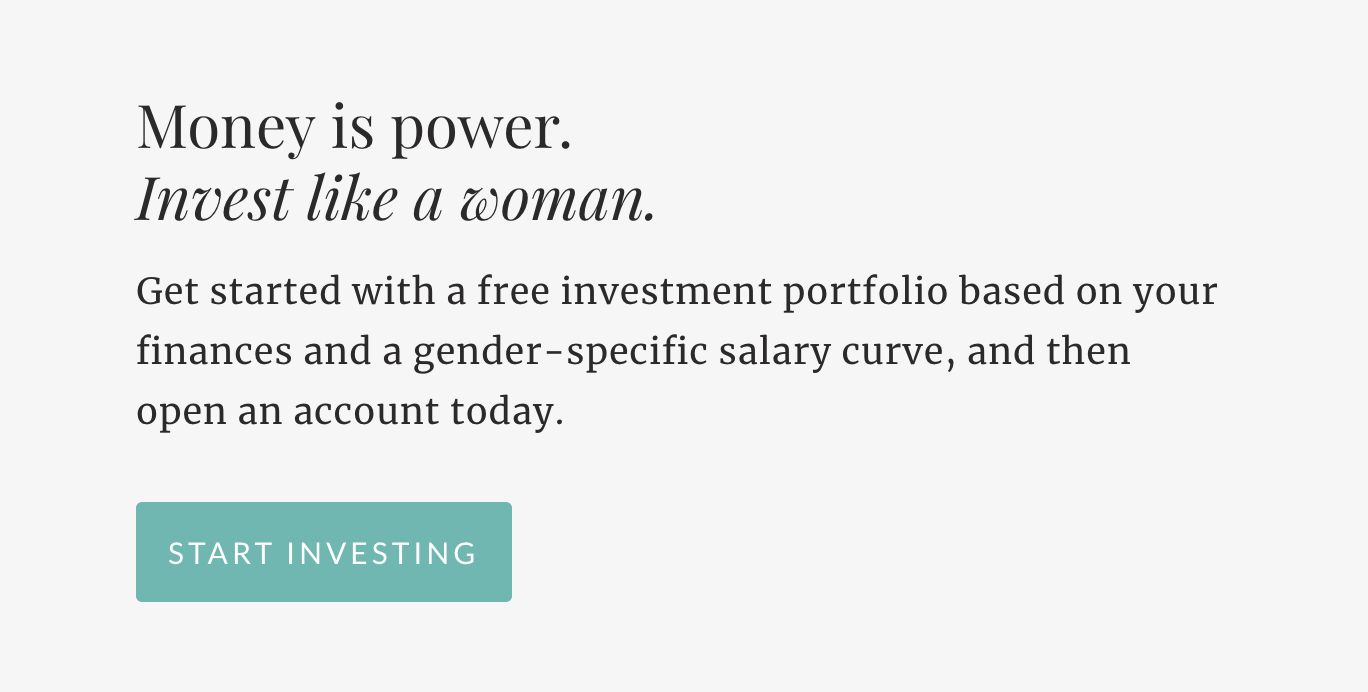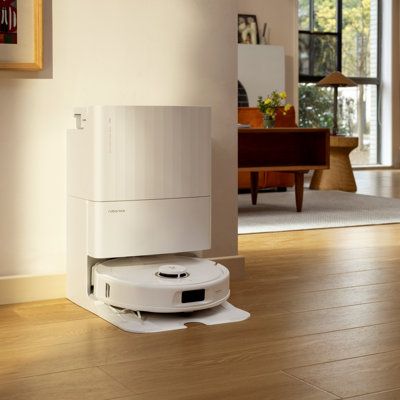You’ve decided to start investing. Good for you! Whether you’re just starting out, in the middle of your career, or getting close to retirement age, this means you’ve started to think about your financial future, and how you should manage your money so that it can work for you.
Nobody starts out an expert in invest, and even the best investors in the world were once in the same position as you are now.
So, let’s start with three questions:
- Where should you begin?
- How do you begin?
- How much do you invest?
Those three inquiries might seem overwhelming, especially if you’ve encountered the array of intimidating investing terms—like market capitalization and return on equity—so we’re here to help. We asked Sallie Krawcheck, CEO and co-founder of Ellevest (an online financial advisory for women) for her guidance.
Ready to get started? Here’s what you should know.
Where do you begin?
Most people put off investing because they think they need a lot of money — like thousands of dollars — to start. This could not be more untrue. You can open an investment account and start investing for as little as $5. So if you find yourself on the receiving end of an unexpected chunk of change (whether that’s $5, $20, $1,000 or more), investing it properly could seriously pay off down the road.
The key to building wealth is creating good habits—like regularly putting money away every month. If you make investing a habit now, you’ll be in a stronger financial position down the road, and with the introduction to user-friendly investing apps and robo-advisors, investing has been made more accessible and easier to understand. With the help of investment robo-advisors, investing can be done with small amounts of money, and done with professional help at little to zero cost!
But wait, what is a robo-advisor?
This is a common question and often misunderstood to be a robot that buys and sells your investments for you (which is NOT the case). Here’s a detailed and easy to understand explanation of what a robo advisor is and how they work.
Robo-advisors are computer automated investment platforms. After signing up and filling out a short survey answering questions about your age, income, retirement goals and risk tolerance, the robo-advisor will put together an optimal portfolio for your goals and automatically manage it to stay on track over time.
Some platform charge for this service, but others like Ellevest, offer free investment plans.
⇒ Get Started Investing With Ellevest
How do you begin?
Robo advisors also typically cost less and offer more than a traditional investment advisor, and take out the one-on-one human element from the equation.
Automating your personal finances is one easy way to simplify and maintain control of your money. Similar to setting up your credit card on auto-pay, set up automatic investing every month. Investing isn’t a one and done kind of thing, and if it is automatic, you won’t even miss the money.
If you want to retire, you have to invest. Whether it is through your 401(k), IRA, or your own personal investment portfolio, you need money to work for you (only you working for it).
Ready to open your investing account? Follow the link below and you’ll be taken to Ellevest for more information
⇒ Get Started Investing With Ellevest
Best for Women: Ellevest
Here’s the truth: There are a million and one “reasons” to put investing off: You’re expecting a raise. You aren’t sure if you know enough to get started. You think you don’t have enough. Retirement feels a hundred years away.
But there’s a single, even more, pressing reason why you should start ASAP (like, right now), $100 a day. $4 an hour. $3,000 a month.
That’s how much you could miss out on by waiting to invest.
If you’re like most women, the extent of your investing—if you invest at all—is likely limited to what you save in an employer-sponsored retirement account. That’s because the idea of investing money into the markets can feel intimidating. In fact, 56% of millennial women have money to invest but aren’t doing so because of fear according to a recent SoFi study.
On the one hand, you’ve heard that it can be a great way to grow your money. On the other hand, the ups and downs of the markets may make you nervous about losing your money. “The reality is, women can’t afford to put off investing,” says Sallie Krawcheck, CEO and co-founder of Ellevest.
“Here’s some math that doesn’t add up: Women retire with two-thirds as much money as men do, buuut we live 6–8 years longer. And the longer we wait to get started, the further behind we get. So, if you think about the means to have more power, getting a raise is certainly one of them. Investing is another.”
Ready to attack this retirement thing and check it off the”to-do” list? Get started today. Ellevest creates personalized investment portfolios in under 10 minutes based on your finances and a gender-specific salary curve.
⇒ Get Started Investing With Ellevest
How much do you invest?
If you’re looking for how to open an account, first things first: open an account and ask yourself some questions like How much money do I want to invest?
There’s a common misperception that in order to invest, you need to first amass a large fortune. That’s not true. You can open accounts with $0—you won’t earn anything, but you can open the account.
And with as little as $1, you can start investing in exchange-traded funds, or ETFs through a digital financial advisory. All you need to do is open an account with a brokerage, which you can do online. Some popular choices are E*Trade, Ellevest, Charles Schwab, or Fidelity. Which type of account is right for you depends on your goals and income.
Sallie Krawcheck, whom I mentioned earlier, founded Ellevest with the specific goal of closing the investing gender gap. The company aims to serve women’s needs better than any other existing system by using an algorithm tailored specifically to women’s incomes and life cycles.
Sign up for a free account with Ellevest today. Get started in minutes.
If you’re looking for some motivation
Retirement. Ahhhh. First: Picture yourself when you retire. Get specific about it — what does your day look like? It can help with the planning process to visualize something tangible to shoot for.
Retirement looks different for everyone (if you even retire at all, that is). If you like the idea of spending your retirement years on the beach sipping Mai Tai’s, you gotta start saving (like now). Depending on your job situation, you may have a 401k, an IRA, a SEP IRA. And when it comes to retirement talk, this is tax code speak for the money you’re saving for retirement.
Sign up for a free account with Ellevest today. Get started in minutes.
If you’re wondering which account type is best for you
For most people, the decision is between an IRA and a 401(k). Both have tax advantages, but they’re different in some key ways. Here’s an in-depth explainer on what they are and how to decide which one’s best for you.
Then, once you’ve decided on either an IRA or a 401(k), you might find yourself with another decision to make: Roth or traditional? Or both? The difference here has to do with taxes and timing. For help deciding, check out the explainers here on Roth vs traditional IRAs and Roth vs traditional 401(k)s.
And if you’re self-employed, there’s a special type of IRA to consider: the SEP IRA. Here’s the breakdown on them and why they tend to be such good options for the self-employed.
Got a traditional, Roth, or SEP IRA that you need to roll over? Check it off your to-do list. Get started here.
If you’re trying to figure out how much you actually need to save
How much do I need? This answer is different for everyone.
Ellevest can help you answer this question, too. Their investing platform makes it really easy (dare I say — fun) to understand how much you need. All you do is enter your personal info into consideration — things like your gender, savings, income, and projected future income — and Ellevest gives you a plan designed to help you get where they think you’ll need to be. They also suggest how much you should put aside for retirement. As a rule of thumb, many advisors recommend the 50/30/20 rule when it comes to how much you should budget for retirement. It’s a high-level, flexible budgeting framework that can help you control where your money’s going without having to count every penny.
Create a free financial plan with Ellevest. They’ll recommend a retirement goal number, down to the dollar.
If you aren’t sure how this whole 401(k) employer match thing works
Did someone say “free money?” Yep … it was your employer. If you have a 401(k) employer match available to you, it’s in your best interest to take full advantage of that. (aka max it out. Here’s how a 401k match works and why that’s the case.
Be a woman with a plan. Invest in Under 10 Minutes.
If you have an old 401(k) or two from a past job just hanging out
Hey, it happens to the best of us. There are a lot of variables involves when you move from an employer and get a new job, and it’s easy to let a former employer’s 401(k) or two get left behind. The good news is that if you left it, you can probably still roll it over — either into your current employer’s 401(k) or an IRA — even if it’s been hanging out for a while. Not sure what that involves? Ellevest can help you answer this question, too and help you start your roll over — no strings attached (more on that below).
Have an old 401k that you don’t know where it is? Ellevest can help you find and move that old 401(k) or 403(b) over.
Start your rollover With Ellevest today.
If you think you might be paying too much in fees
It’s possible. In fact, high fees on your investments are really bad news for your bottom line. According to the Securities and Exchange Commission (aka the SEC), higher fees can cost you tens of thousands of dollars over a 20-year timeline. So, how can you find out if your fees are too high?
Basically, there are two ways of finding out. First, you can start a rollover — for either an IRA or a 401(k) — to Ellevest, no strings attached. They’ll take a look at the fees you’re paying now and let you know what they think your best bet is going forward, even that doesn’t mean recommending that you switch to them. Why? Because, they’re a fiduciary (aka they’re the good guys) and being a fiduciary means that since we’re an SEC-registered investment advisor — so, they’re obligated to act in your best interests.
But the financial industry doesn’t follow the same standards when it comes to providing investment advice to clients. Investment advisors like Ellevest have a duty to put your needs first. No ifs, ands, or buts about it.
So, do your research. I did my due diligence and most of the 401(k) plans I saw had higher fees than Ellevest’s do. So, I’m happy I used them. Either way, no matter where you start with your retirement planning and investing, the most important thing is that you get started. (Because you don’t get that fabulous — Mai Tai sipping — future retired life if you don’t do that.)
For when you don’t have a retirement fund…
Don’t sound the alarm – yet. Ellevest can get you set up in less than 10 minutes so you can reach all of your money goals. Sans judgment, finance jargon, and trust issues. Crisis averted. Get into it here.*

Want more? Here are a few more personal finance pieces:
How to Divvy Up Your Paycheck for Financial Success: The 50/30/20 Rule
The Personal Finance Tips Everyone In Their 20s Should Follow
3 Reasons Why You Need a Roth IRA- Even If You Have a 401(k)
Disclosures: We’re excited to be working with Ellevest to start this conversation about women and money. We receive compensation if you become an Ellevest client.
Questions? We’re here to help. Leave us a comment and we’ll get back to you!







